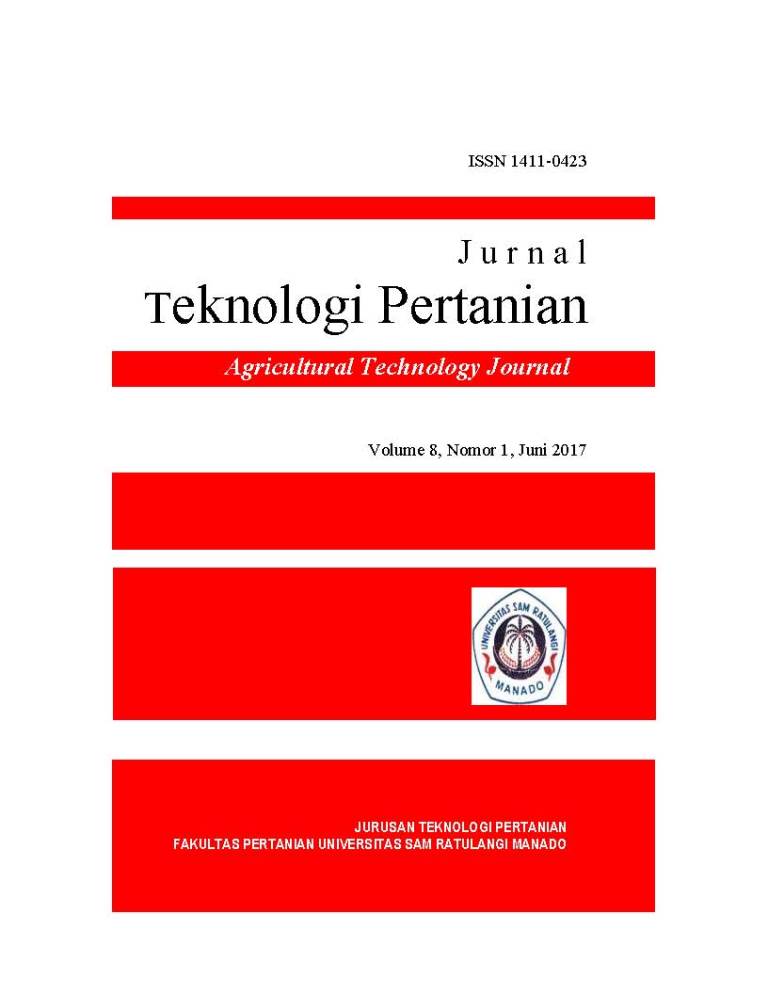KOMPOSISI KIMIA DAN GIZI JAGUNG LOKAL VARIETAS ’MANADO KUNING’ SEBAGAI BAHAN PANGAN PENGGANTI BERAS
DOI:
https://doi.org/10.35791/jteta.v8i1.16351Abstract
Increasing health concerns regarding a more balance diet have encouraged some people to have less rice in their basic daily menu in order to accommodate low glicemic carbohydrates energy sources in their diet. Corn products are considered not only have low-to-medium glycemic index but also have high fiber content. Nowadays, more people in Minahasa and Manado area have basic meals of rice have been fully or partially replaced by corn mill product (locally called corn rice). A local variety corn, named Manado Kuning, is among the most popular corn to be processed and sold as rice corn in Manado and Minahasa area. It chemical and nutritional properties, therefore, were analyzed in order to evaluate it merits as a rice substitute or alternative. The results showed that the corn grown at different location in greater Minahasa area has slightly different composition. The protein, fiber, carbohydrate and total carotene contents of the grits product were 10 – 11 %, 0.26 – 0.85%, 75 – 76% and 10 – 11mg/100 g respectively. Among twenty main amino acids, the grits product contain only 13 significant amino acids that ranging from the lowest 0.36% (methionine) to the highest 1.93% (aspartic acid). The color of the corn product (grits) was seen similar in all samples. It seemed that its low fiber content made it less potential to provide low glycemic product because some of the fiber was lost during milling to produce grits. In order for the local corn to have lower glycemic content, the whole seed should be used in final product.Downloads
Published
2017-06-26
Issue
Section
Articles


 Journal Template
Journal Template


